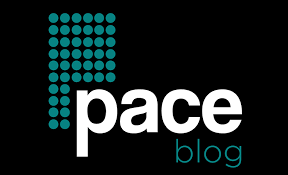In recent years, the corporate world has undergone a significant transformation, with digital security and remote accessibility becoming top priorities. As we head into 2025, it is projected that over 80% of companies worldwide will adopt a VPN (Virtual Private Network) workplace model. This shift is not a passing trend—it reflects a fundamental change in how businesses ensure operational continuity, protect sensitive data, and maintain a flexible workforce structure.
The Drivers Behind the VPN Workplace Model
VPNs were once primarily associated with tech-savvy individuals or privacy-conscious consumers. Today, however, organizations of all sizes are turning to VPNs as a strategic business tool. The reasons for this are both practical and critical:
- Enhanced cybersecurity
- Cost-effective scalability
- Support for remote and hybrid workforces
- Regulatory compliance requirements
1. Strengthening Cybersecurity in a Decentralized World
Perhaps the most compelling reason businesses are turning to the VPN workplace model is the escalating threat of cyberattacks. Companies are no longer secured merely by physical office boundaries. With remote and hybrid work models now standard, data is constantly accessed from diverse locations, often over unsecured networks.
A VPN helps by encrypting all internet traffic between the employees and the company’s servers, ensuring no sensitive data can be intercepted by hackers. Cybersecurity experts have consistently rated VPNs as an essential layer of defense in the modern digital workspace.

Moreover, with malware and phishing tactics becoming more sophisticated, a VPN provides an additional safeguard, especially when employees are connected to public Wi-Fi networks or operating from personal devices.
2. Supporting the Remote and Hybrid Workplace Revolution
The COVID-19 pandemic accelerated a shift toward remote working that has since become a permanent fixture in the corporate landscape. By 2024, approximately 60% of employees in developed countries were working either fully remote or in a hybrid model. This trend is expected to rise further in 2025.
In this context, a VPN ensures seamless, secure access to organizational tools and resources from any location. Without it, companies face challenges in maintaining secure connectivity and protecting their internal systems from unauthorized access.
Companies have reported increased employee satisfaction and work-life balance due to flexible working arrangements. VPNs make this flexibility technically feasible without compromising on security.
3. Cost Efficiency and Operational Scalability
Establishing and managing physical infrastructures, such as office buildings and local servers, is resource-intensive. VPNs support cloud-based ecosystems, allowing companies to scale their operations quickly and affordably.
The VPN model enables IT departments to set up new employees, grant them secure access to systems, and manage network traffic more efficiently—all without the need for onsite visits or hardware installations. This becomes especially relevant as businesses experience frequent changes in team size, especially with project-based hiring and seasonal employment.
Furthermore, reducing dependence on traditional office setups means significantly lower overhead costs, including rent, utilities, physical security, and office supplies.
4. Compliance With Global Data Protection Regulations
As digital data becomes central to nearly every business activity, international regulations like GDPR (General Data Protection Regulation) in Europe and CCPA (California Consumer Privacy Act) in the U.S. have introduced stringent requirements on how companies store, transmit, and access sensitive information.
VPNs offer a mechanism for companies to ensure encrypted data transfer, enhancing compliance with these regulatory requirements and avoiding expensive fines or potential reputational damage. This is particularly crucial for businesses handling health records, financial details, or other personal customer data.
Challenges Leading to the VPN Pivot
While the transition to a VPN workplace model seems like an obvious strategy now, it’s the result of a few key pressures building over time:
- Increased cybercrime sophistication: More advanced hacking strategies necessitate stronger digital fortifications.
- Inadequate legacy infrastructure: Many internal networks simply weren’t designed for modern, decentralized teams.
- Cloud-first strategies: Companies moving to the cloud require dynamic and secure access solutions.
- Employee demand for flexibility: Remote access is becoming as critical as health benefits in job negotiations.
Each of these factors has made the decision to invest in VPN solutions not only strategic but essential for business continuity in 2025 and beyond.

The Future: Beyond Traditional VPNs
While traditional VPNs provide essential services, next-generation VPN technologies are already gaining attention. Innovations like Zero Trust Network Access (ZTNA) and SD-WAN (Software-Defined Wide Area Network) take VPN concepts even further by offering more granular control over how and when users access resources.
As these technologies become more widely adopted, companies will benefit from even more refined authentication methods, improved network performance, and reduced latency. Integrated AI and machine learning in VPNs will also provide predictive threat detection, further strengthening security postures.
Case Studies: Companies Leading the Transition
Industry leaders across various sectors are adopting the VPN-driven model:
- Finance: Major banks and investment firms have migrated entire departments to secured remote access to reduce the risk of insider breaches and streamline auditing.
- Healthcare: Hospitals and research institutions use VPNs to allow professionals secure access to patient records and lab results in accordance with HIPAA and other standards.
- Education: Universities facilitate VPN-based logins for international students and faculty, ensuring academic material and student portals are safely accessible worldwide.
Even small to medium enterprises (SMEs) have started adopting VPN solutions integrated with cloud-based systems like Microsoft Azure and Google Workspace, showing that the model isn’t limited to massive corporations.
Preparing for the Transition
If your organization hasn’t yet embraced the VPN workplace model, it’s not too late. Here are a few steps leaders can take to prepare:
- Evaluate current infrastructure: Determine whether your systems can support remote VPN connectivity without compromising speed or performance.
- Invest in employee training: Ensure teams are aware of security protocols and understand how to use VPN tools effectively.
- Choose a reliable VPN provider: Research options that offer enterprise-grade encryption, support, and scalability.
- Develop an implementation roadmap: Roll out VPN access in stages, allowing for IT monitoring and user feedback.
Conclusion
The numbers don’t lie: over 80% of companies plan to adopt or expand their VPN workplace strategies in 2025. This move reflects a broader understanding of the integral role digital security plays in a flexible and scalable enterprise landscape. The combination of cost-efficiency, remote accessibility, and regulatory compliance makes a strong case for the VPN model as not just a tool, but a cornerstone of future-ready businesses.
Forward-thinking organizations are those that align with evolving technological landscapes. Embracing the VPN workplace model today ensures security, flexibility, and growth—imperatives for success in the digital era.

